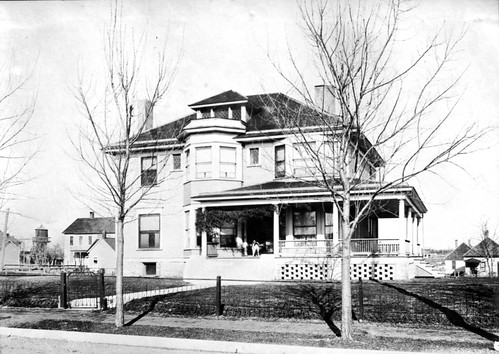Thomas Connor, a son of Ireland and immigrant to America, made his fortune in Joplin in zinc and lead mining. He oversaw the construction of the New Joplin Hotel, which after his death, became known as the Connor Hotel and was a Joplin landmark until its demolition and collapse in 1978. Connor Avenue, the site of the Extreme Makeover build, is named for him. Known for being one of Joplin’s wealthiest citizens at the turn of the 20th Century, as well a philanthropist, Connor was also a bit of a prankster. Below is an account of one of Connor’s more elaborate jokes:
“Though nearly a month has gone by and Tom Connor is far away out west, he’s still chuckling to himself out there over about the best April fool joke of the season, and the biggest practical prank ever pulled off in Joplin.
Elaborate paraphernalia was necessary to stage this idea, but Tom Connor had the resources at his command and was ready when the opportunity of his life offered. The occasion came with the arrest of an elderly female employee of the Joplin Hotel Company, which is comprised of Tom Connor, Tom Jones and E. Z. Wallower. The woman was at work about the hotel as a maid when eleven silver spoons disappeared one day and she was promptly arrested on suspicion. The case seemed to be a pretty good one, and Frank Lee, whom she retained as counsel, went to the benevolent Tom Connor to get the prosecution stopped.
Connor magnanimously assented and passed the tip to Manager Moats, who had instituted the proceedings.

The Old Joplin Hotel was the site of the prank. The Joplin Public Library is now located where it once stood.
At the same time that he caused the prosecution to be stopped, the big-hearted Connor bethought himself of the chance of a lifetime for a practical joke on his partner, Tom Jones. Attorney Richard N. Graham was employed to draw up the petition for a fake $20,000 damage suit, alleged to have been instituted by the elderly chambermaid for false imprisonment.
The sheriff’s office was the next piece of paraphernalia employed by the practical joker, and Deputy Clarence Rier responded nobly by awaiting an opportunity to catch Connor and Jones together. He found them in the Joplin Hotel barber shop and cold-heartedly announced that duty compelled him to serve a copy of the petition of this $20,000 damage suit on them as the two resident members of the defendant hotel company.
“What’s that – a $20,000 damage suit!” fairly gasped Jones. Connor looked astounded – but his funny-bone was paralyzing him.
“What is it?” demanded Connor, feigning, then the deputy sheriff’s heart failed him – at least risibility threatened him and he walked on away, leaving the victimized Jones pouring over the bogus typewritten petition, which the attorney had purposefully made very, very lengthy, padding it with all the whereases, wherefores and other legal verbiage to be found in the revised statutes.
“Thunderation!” boomed Jones.
“Consternation!” echoed Connor, with a look of blank dismay, but with that ecstatic feeling creeping up his sleeve.
And the best of the joke is that Connor went away on his western trip and Jones don’t know till this day that the chambermaid’s $20,000 damage suit was a “pipe.”














